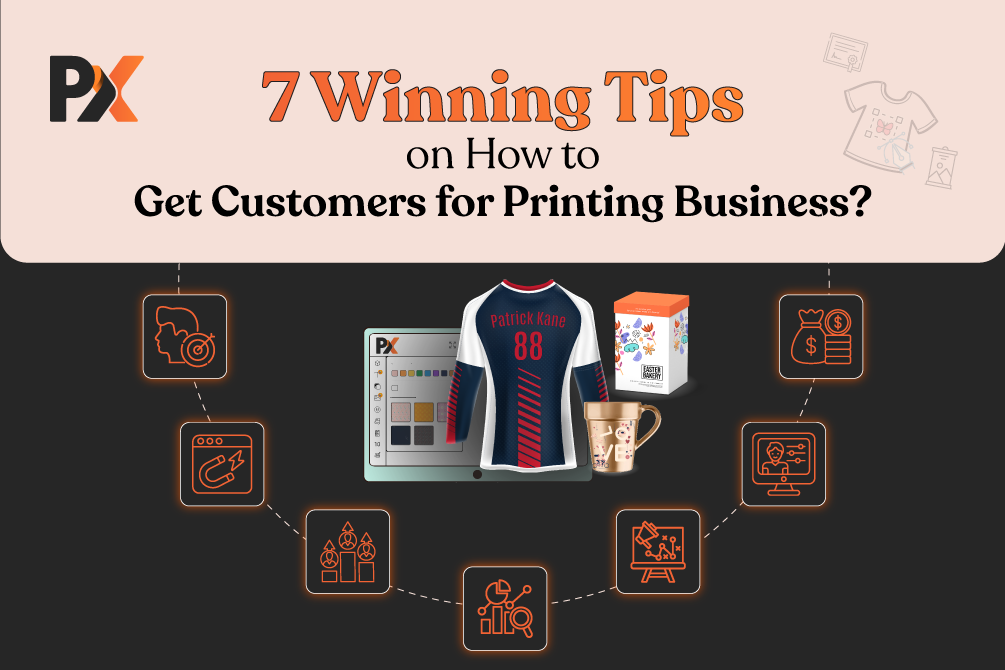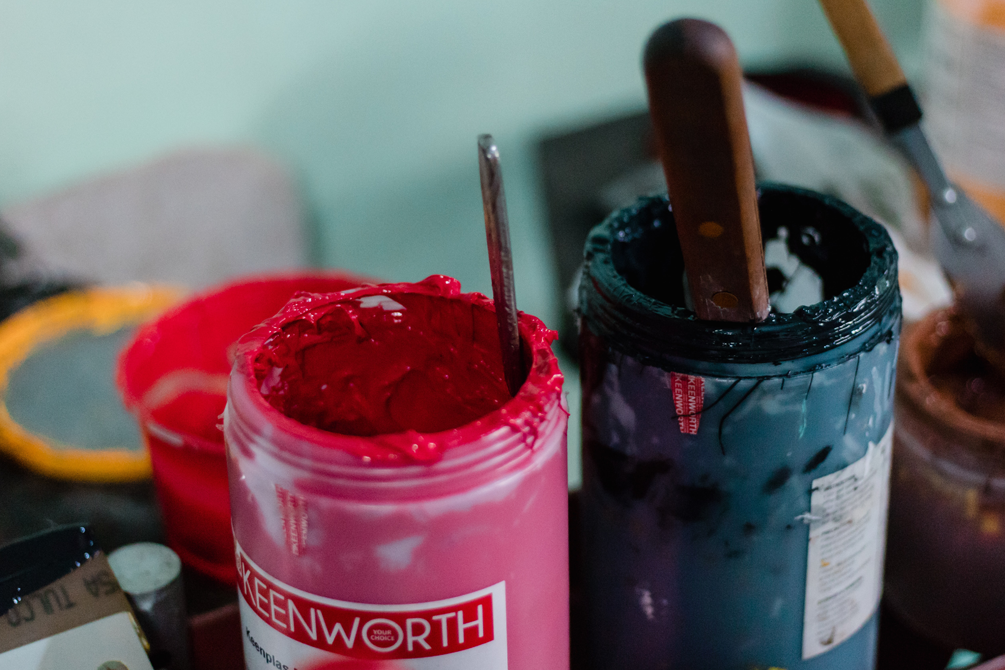
The printing business has boomed over the last few decades. Technology intervention has revolutionized the industry and made it easy for printing businesses to serve their customers better and in new ways.
The demand for printing services and printed products has increased dramatically. Simultaneously, several entrepreneurs are getting into this business, making it fiercely competitive to maintain your standing and high prices.
When you are faced with such an issue, you need to distinguish between fixed costs and changeable costs. Research competitors’ pricing and then decide your final cost depending on your quality of work and competition. Considering the quality you will provide, you can either set the price higher or lower than your competitors. It is crucial to define your costs and value, but it will surely help your business.
Going further, let’s see how to price screen printing to customers and things you need to consider to create your pricing structure:
How to Price Screen Printing
Monthly Expense:
This is the first and foremost step you need to take. You have to keep a tab on your monthly expenses. It includes shop rent, investment in the printer – either bought or rented, internet cost, insurance, administration expense, business partner’s percentage, and more. Including these things in your printing costs will provide you with more clarity and earn money.
Once the first step is clear, you can decide further.
Size and Number of Prints:
You need to define the various print sizes and costs you will charge. Here, you will not calculate according to the number of t-shirts you will print. But, you will check the number of prints you will create.
For example, you have to print 50 t-shirts back and forth; then, it will be counted as 100 prints and not 50. Next up will be the size. You have to define what the frame size of the prints is and depending on it you will decide your charge. If the design needs to be done on 6 X 6 or 5 X 5 frames, you will charge accordingly.
Usage of inks:
Once you have decided the charge based on the size, the next step is deciding it based on the number of inks. Inks play an essential role in the printing industry and have a significant impact on the fabric. First is selecting the ink type, and brand depending on the type of material. As different materials need different ink types.
Once you have defined the ink of your choice, next is the quantity. It depends on the printing method you are using. For example: if you are using a screen printing method and the design requirement is 3 colors, you need to have 3 screens for each color. Most of the printing businesses are carried out B2B, so now just imagine this for bulk orders! The number of inks, screens, and workforce required and charged will be exorbitant.
If you do not consider these things at an early stage, the overall costs of printing will increase and you won’t be able to manage budget or even charge your customers correctly.
Hence, when an order is placed, check the number of colors required, think about the printing method you will use, and then plan your charges accordingly.
Types of Products:
There are various types of products like garments, mugs, ceramics, clocks, etc. which you will be printing. The quality of the products, brand names, varied sizes, and shirts add up cost. Often you will purchase them in bulk and at reasonable prices. Here, you need to define the types of materials and products you will need, their brands, sizes, etc, depending on the lists of products you want to provide. Once, you define these things and forward it to the whole-seller, you will get the quotation.
Pro-tip: Be very specific when gathering requirements for your work because if you miss even one of it, it might affect the overall cost.
Further, depending on the quotation you will add your labor cost, designing, and more charges. Lastly, decide your margin, define the cost it will take to print based on an individual product, and then decide your final quotation.
Labor Work:
The amount of time taken to print is inversely proportional to the workforce required to do that job, you need to calculate this. Let’s say, you are having plenty of orders and you need to hire two people for the printing process, you will define their cost per hour. How will you get money to raise their income?
You will include it in your printing work. So, make sure that your pricing lists consist of the resources you are using behind each bulk of t-shirts being printed. It will help you define and understand each of these orders’ needs and have your own profit in it.
Packaging Charges:
Larger the order, the more packaging you will need. You will need to reach out to vendors and order packaging products in bulk for packing your products. Further, you might need to make changes according to your business requirements; you will need to add things like business logo, trademarks, definite packaging size, colors, certain designs, or prints on it, and more.
Trying to personalize your packaging will help you to connect with your customers emotionally. Of course, it will be a bit costly compared to other packages, but it will help your business stand out.
The cost of personalized packaging will be more so you can include that in your printing work and charge accordingly.
Shipping Charges:
Shipping/ delivery charges are very essential for you. Your whole store will be online and to make the product delivery, you need to get in touch with a logistics company. Depending on the cities, states, or countries you plan to provide your service, you will have to hire logistics companies in those places.
Each of these logistics companies will take plenty of money from you for timely and safe deliveries. Hence, you will need to include those things in your printing business, add your screen printing profit margins, and decide your final cost.
Providing Discount and Sales:
Discounts too, have an important part to play in your businesses. Once you create your pricing keeping your screen printing profit margins in mind, you can provide discounts. This will help you to drive more sales and increase your customer base. To provide discounts, you can build certain criteria like shopping above X amount, festive sales, discounts at orders above X numbers, etc. It is a way to market your services, generate more income, and serve better. These factors will help you to better define your work and charge accordingly.
Many times people have a common question for print business owners, i.e., the high cost of dark garments. Let us have a quick brief about why dark garments are costly to print than other colored garments.
Why are Dark Garments Costly to Print?
Dark garments need extra color in the under-base to allow a surface for pigments to sit on the brighter parts. If the under base is not used, you will need to print each color multiple times. It means more inks, screens, and 3 times more effort to achieve the same color opacity.
Thus, this entire process takes up more expense. So, when you plan to print dark color garments, make sure to define your charges accordingly and then take the order.
Conclusion:
Charging the correct amount for your artwork and without any hesitation is important. You need to make sure that your charges are nominal. If you are still confused about how to price screen printing to customers or refrain from going into so much math, here’s what you can do:
(item price * item markup) + (printing fee – discounts given) = price per item
Put values at the needed place, and viola, you get the cost per item! Easy, right?
Apart from this entire math, if you are looking for software that can upscale your business, we have a one-stop solution for you, i.e., Product Designer Tool from PrintXpand. Our tool’s feature-rich library, easy-to-use interface, mobile-first approach, and more make it easy to use. Your customers can create designs and directly place an order, reducing unwanted communication, last-minute changes, and unnecessary back and forth.
Take a personalized demo to get a complete understanding of our tool.
All product and company names are trademarks™, registered® or copyright© trademarks of their respective holders. Use of them does not imply any affiliation with or endorsement by them.





